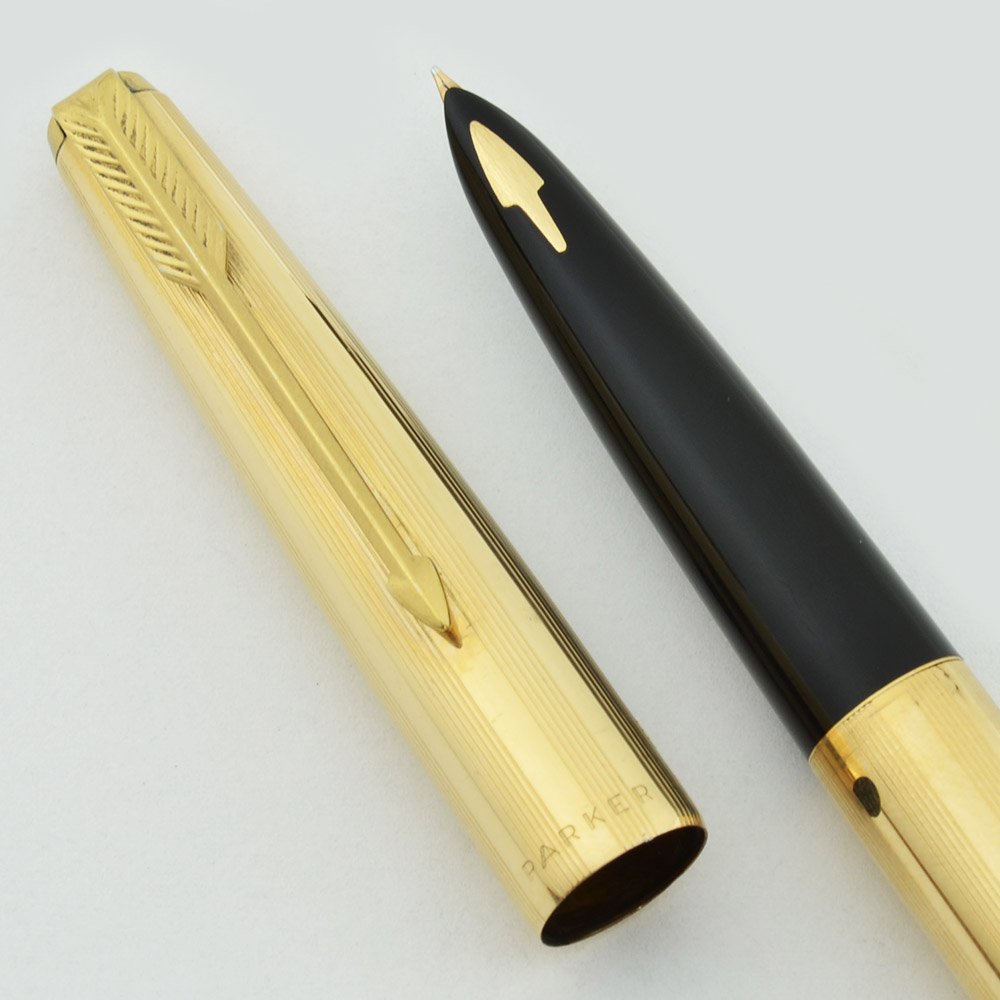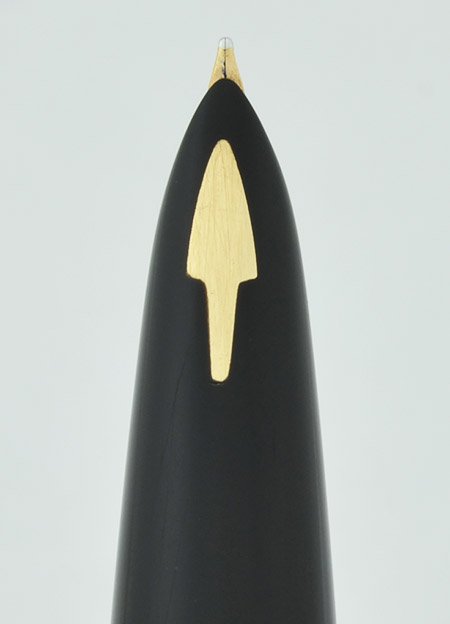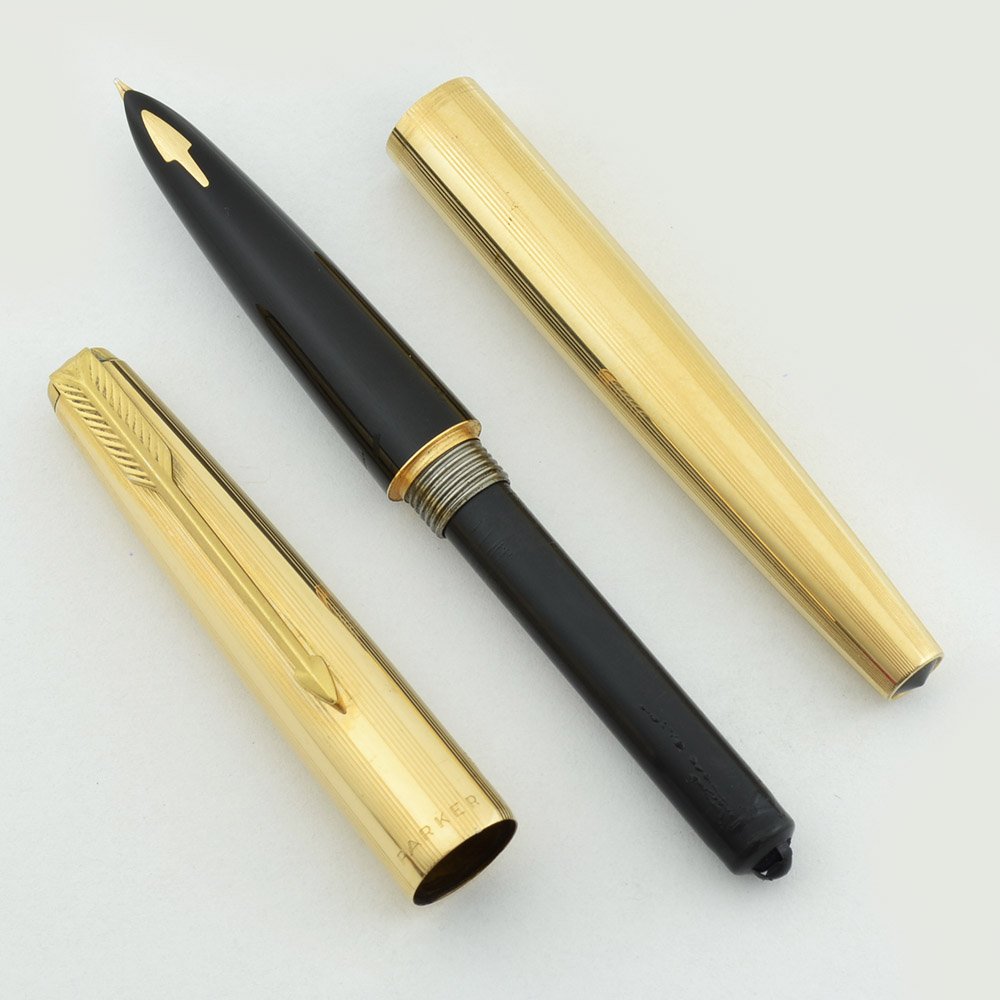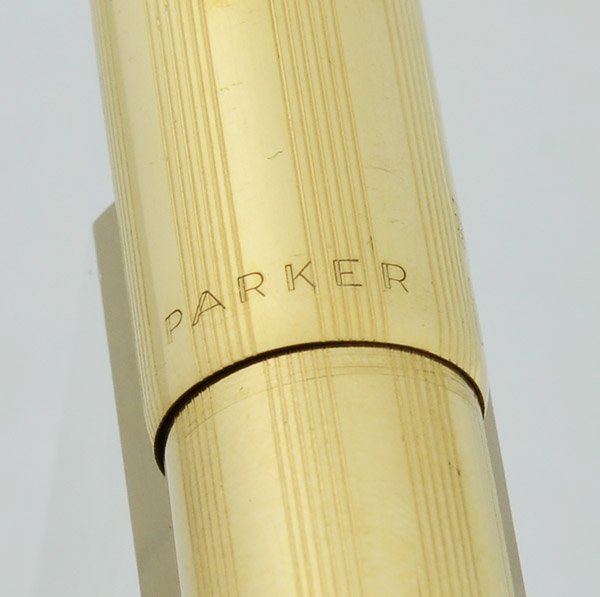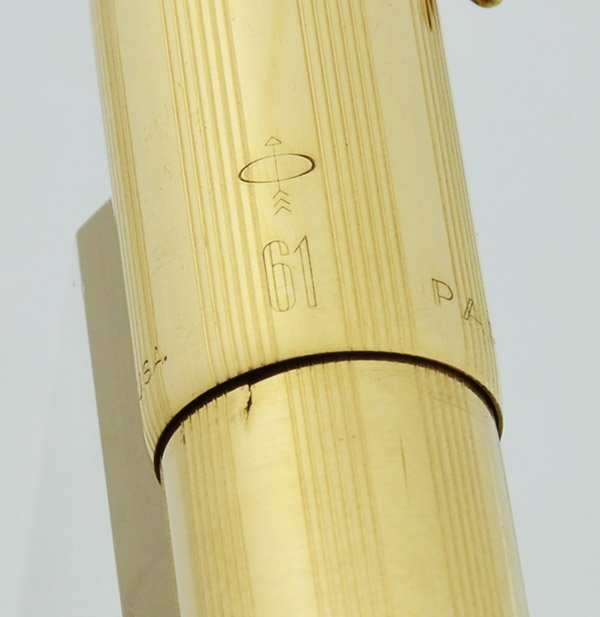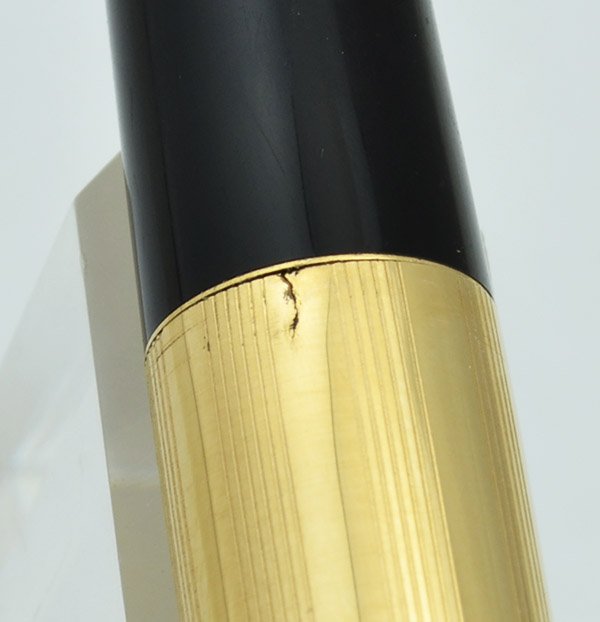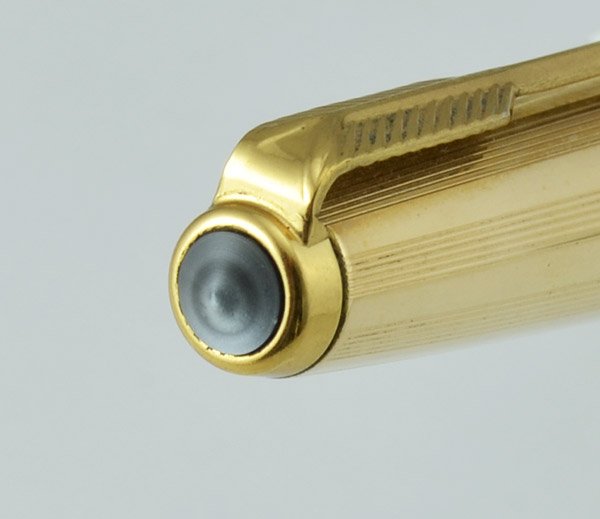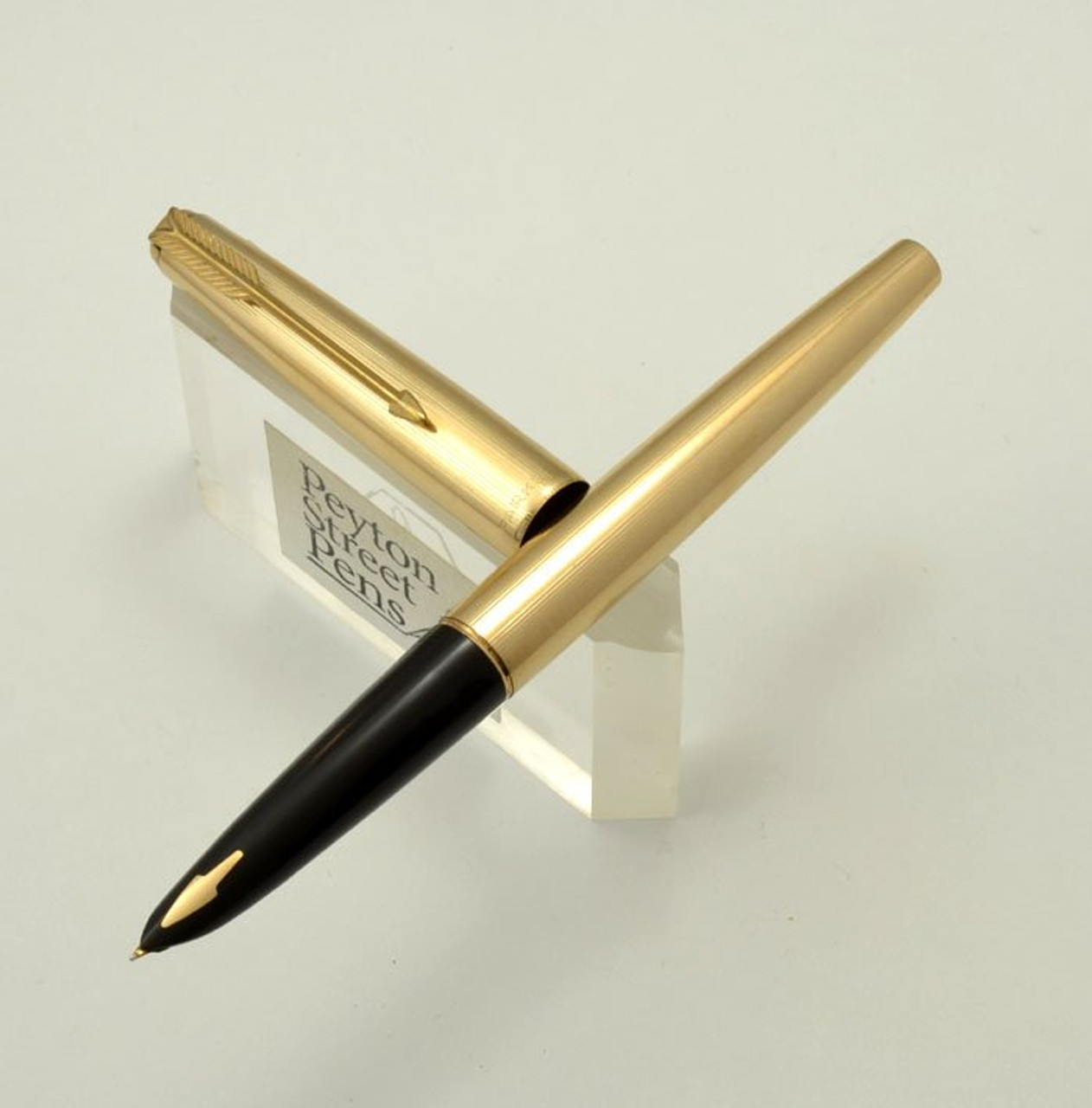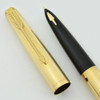Product Description
Type Vintage capillary filling fountain pen.
Product Name Parker 61 Signet Mk I.
Manufacturer and Year Parker, made in USA – 1958-62 (the 61 signet was introduced in lat 1958, and they started using different clutch rings on the Mk II model in '62.
Length 5-3/8".
Filling System The 61 has the unique capillary filling system. We fully cleaned and tested the system to ensure that it is working properly. More information on the capillary filler below.
Color 1/10 12k gold filled body and cap in a patter nof groups of six lines with gold plated trim, a black section, and a pearlescent jewel on either end.
Nib The gold nib is not marked but it looks and writes like a fine. Very smooth and nicely wet. The nib shows little if any wear.
Condition Excellent condition except for a small crack in the gold filled finish on the barrel where it meets the section (visible in the photo below). The barrel screws on perfectly and this area does not need to be ink-tight. Otherwise the pen looks great, with just three tiny marks of brassing on the barrel, some light handwear on the cap and barrel, and some light scratching on the section and the gold arrow inset in the section (visible in nib photos below).
The teflon cell has some small spots of extra teflon coating, but no scratches or tears in the coating. No dings or dents, no personalization. You'll need to be patient when you fill it the first time, as it takes about a half hour for the capillary system to suck in enough ink to get started.
A word or two about the Parker 61 Capillary Filling System. If you are not familiar with this unique design, you should read this.
Here is how you fill a Parker 61, and an insight into how the pen actually works. Unscrew the barrel and stick the back end of the pen (aka the capillary cell) into a bottle of ink. Wait a few minutes (probably more like a half hour when you first start one of these older pre-owned pens), and let the ink wick up into the capillary cell. The cell contains a sheet of perforated plastic that has been given a 3-D pattern resembling tire tread, and rolled up. The perforations allow ink to seep between the rolled-up layers, and the tread pattern maintains space between the layers. In the middle of this tube, which runs the entire length of the capillary cell, is the feed. To keep things clean, the capillary cell has a coating of teflon on the outside that is intended to shed ink as the user withdraws the pen from the ink bottle, leaving very little ink to be wiped off. The end of the barrel contains a spring-loaded thingy which covers the open end of the capillary tube, but still allows it to vent.
